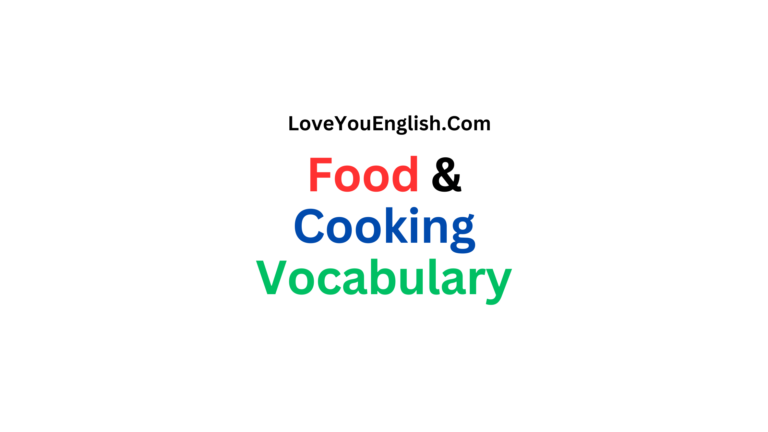Creating Effective Lesson Plans for ELT: A Step-by-Step Guide
Imagine walking into a classroom full of eager English language learners, knowing exactly how to guide them toward fluency with confidence and clarity.
Creating effective lesson plans for English Language Teaching (ELT) can make this vision a reality.
A well-designed lesson plan is like a roadmap—it helps teachers stay organized, keeps students engaged, and ensures learning goals are met.
Whether you’re a new teacher or an experienced one looking to refine your skills, I will walk you through the process of crafting lesson plans that work for ELT classrooms. Let’s dive in!
Why Lesson Plans Matter in ELT
Before we get into the steps, let’s talk about why lesson plans are so important.
Teaching English to non-native speakers comes with unique challenges.
Students may have different levels of understanding, cultural backgrounds, and learning styles.
A good lesson plan helps you address these differences while keeping the class focused and productive.
It saves time, reduces stress, and gives you a clear structure to follow.
Plus, it ensures that every activity has a purpose tied to helping students improve their English skills—listening, speaking, reading, or writing.
Now, let’s break it down into simple steps you can follow to create an effective ELT lesson plan.
Step 1: Identify Your Learners’ Needs
The first step is to know who you’re teaching. Every group of students is different, so ask yourself: What do they already know? What do they need to learn? Are they beginners, intermediate, or advanced learners? Are they kids, teens, or adults? Understanding your learners’ needs will shape your lesson.
For example, beginners might need help with basic vocabulary like colors or numbers, while advanced students might want to practice complex grammar or conversation skills. You can find this out by talking to your students, giving them a quick quiz, or checking their previous work. Once you know their level and goals, you can plan a lesson that’s just right for them.
Step 2: Set Clear Objectives
Every lesson needs a goal. What do you want your students to be able to do by the end? This is called the lesson objective, and it should be clear and specific. Instead of saying, “Students will learn English,” try something like, “Students will be able to introduce themselves using five new sentences.” Clear objectives keep you and your students on track.
In ELT, objectives often focus on one or more of the four skills: listening, speaking, reading, or writing. For instance, if you’re teaching a group of intermediate adults, your objective might be, “Students will practice speaking about their weekend plans using the future tense.” Write your objective down—it’s the foundation of your lesson plan.
Step 3: Choose a Theme or Topic
A good lesson feels connected, not random. Picking a theme or topic ties everything together and makes learning more interesting. Think about what your students care about. Are they preparing for a trip? Learning English for work? Or just having fun? Your theme could be “travel,” “jobs,” “food,” or even “daily routines.”
For example, if your theme is “food,” you could teach vocabulary like “pizza,” “salad,” and “drink,” practice sentences like “I’d like to order…,” and even role-play a restaurant scene. A theme gives your lesson a real-world feel, which helps students see how English fits into their lives.
Step 4: Plan the Lesson Stages
An effective ELT lesson usually follows a simple structure with three main stages: Engage, Study, and Activate (often called ESA). This keeps the class flowing smoothly and balances learning with practice. Let’s look at each stage.
Engage: Start with something fun to grab your students’ attention. This could be a question like, “What’s your favorite food?” or a short video clip. The goal is to warm them up and get them thinking about the topic. Keep it short—five to ten minutes—and make it interactive.
Study: This is where you teach the new material. Introduce the vocabulary, grammar, or skill tied to your objective. For example, if your goal is to teach past tense verbs, explain how they work (e.g., “walk” becomes “walked”) and give examples. Use visuals, handouts, or whiteboard drawings to make it clear. Then, let students practice with exercises like filling in blanks or matching words.
Activate: Now, let students use what they’ve learned in a real way. This could be a role-play, a group discussion, or a writing task. For instance, after learning food vocabulary, they could pretend to order at a restaurant. This stage helps them build confidence and see how English works outside the textbook.
Each stage should connect to your theme and objective, keeping the lesson focused.
Step 5: Select Activities and Materials
Activities bring your lesson to life, so choose ones that match your students’ level and interests. Keep them simple but engaging. For beginners, try games like Bingo with new words. For advanced learners, a debate or story-writing task might work better.
Materials matter too. You don’t need fancy tools—just a whiteboard, paper, or pictures can do the trick. If you have access to technology, short audio clips or online quizzes can add variety. For example, in a “travel” lesson, you could use a map to teach directions or play a recording of airport announcements. Make sure everything supports your objective and keeps students active.
Step 6: Manage Time Wisely
Timing is key in a lesson plan. Decide how long each part will take and stick to it. A typical ELT lesson might be 45–60 minutes, so here’s an example breakdown for a 60-minute class:
-
- Engage: 10 minutes (warm-up discussion)
-
- Study: 20 minutes (teaching and practice)
-
- Activate: 25 minutes (role-play or task)
-
- Wrap-up: 5 minutes (review and homework)
Write the times next to each activity in your plan. This keeps you from rushing or running out of time. If something takes longer than expected, adjust on the spot—flexibility is part of teaching!
Step 7: Include Assessment and Feedback
How will you know if your students met the objective? Build in quick checks during the lesson. This could be asking questions like, “Can you tell me one new word you learned?” or watching them during the Activate stage. You don’t need a formal test—simple observation works too.
Feedback is just as important. Praise their efforts (“Great job using the past tense!”) and gently correct mistakes (“Try saying ‘I went’ instead of ‘I go’”). This helps them feel supported and shows them how to improve.
Step 8: Plan for Flexibility
No lesson goes perfectly every time. Students might finish early, struggle with a concept, or get distracted. Be ready to adapt. Have an extra activity—like a quick vocabulary game—in your back pocket. If something’s too hard, simplify it on the fly. A good plan is a guide, not a strict rulebook.
For example, if a speaking task flops because students are shy, switch to a pair activity instead of a whole-class one. Flexibility keeps the lesson moving and the students engaged.
Step 9: Wrap Up and Reflect
End your lesson with a short wrap-up. Review what they learned (“Today, we talked about food and practiced ordering”) and ask a fun question (“What will you eat tonight?”). You can also give homework, like writing three sentences using new words.
After class, take a moment to reflect. What worked? What didn’t? Jot down notes to improve next time. Maybe the game was a hit, but the worksheet was confusing. Reflection helps you grow as a teacher.
Putting It All Together: A Sample Lesson Plan
Here’s a quick example for a 60-minute beginner class:
-
- Objective: Students will learn five food words and use them to order in a restaurant.
-
- Theme: Food
-
- Engage (10 min): Show pictures of meals and ask, “Which do you like?”
-
- Study (20 min): Teach words like “soup,” “bread,” and “juice.” Practice with a matching game.
-
- Activate (25 min): Role-play ordering food in pairs—one student is the waiter, one is the customer.
-
- Wrap-up (5 min): Ask, “What’s your favorite food from today?” Assign homework: “Write three food sentences.”
Final Thoughts
Creating effective lesson plans for ELT doesn’t have to be complicated.
Start with your students’ needs, set a clear goal, and build a lesson that’s engaging and practical.
Use the ESA structure, pick fun activities, and stay flexible.
With practice, you’ll find a rhythm that works for you and your learners.
Teaching English is about more than grammar and vocabulary—it’s about helping students connect with the world.
A solid lesson plan is your tool to make that happen.
So, grab a pen, start planning, and watch your classroom come alive with learning!
What’s the first lesson you’ll create?
Read more:
- Remote Education Jobs Opportunities
- The Role of Technology in English Teaching
- Managing Discipline in Online ESL Lessons
- How to Write an Essay in English Without Plagiarism
- A Short Story for Kids – A Brave Little Fox in Alaska
- The Fake Election Story for Kids







